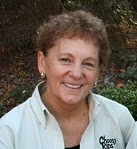By: Lindsay Dawson, Choosy Kids Social Media Account Manager
I will never forget the afternoon of December 6, 2001. Little 11-year-old me had been sick for nearly a month. I was constantly thirsty; my complexion was muted; I had no energy; and despite my consistent hunger, I’d lost about 15 pounds in two weeks. My mom had been so concerned that I wasn’t eating, or that something very serious was happening to me. And on December 6th, she picked me up from school, took me to my doctor, and stood by my side as my life changed forever.
That afternoon, I was diagnosed with Type 1 Diabetes– a chronic autoimmune disease in which the child’s pancreas stops producing insulin, either due to hereditary disposition or a virus that initiates the attack on the pancreas. Only 5% of people with diabetes have this form, Type 1 – formally known as juvenile diabetes. Without a functioning pancreas, Insulin cannot be produced. Insulin is one of the 8 hormones produced in the body that regulates blood sugar. This disease is not life threatening if treated properly, though there is currently no cure. The day I was diagnosed, I was sent to the hospital for a week of training and education.
I never ate poorly as a child, thanks to my mom’s love for home-cooking and her studies of being a nutritionist in college, I learned that I could never eat the same way. The sweet tooth I inherited from my dad had to be controlled (I loved popsicles and ice cream!), birthday parties and school lunches would be very different. Not only was food affected by my diagnosis; I’d no long be able to exercise the same way, travel, attend school, or even sleep as I had for the previous 11 years. Everything had to change, and I had to adapt to my new lifestyle very quickly.
As I mentioned, this form of Diabetes is either hereditary or caused by a bad virus, like Chicken Pox. I’m still not sure which caused mine: Type 2 runs in my family, and I had a viral rash for about 6 months earlier in the year I was diagnosed. Whatever the case, Diabetes treatment is very complex, particularly for a Type 1. You have to keep your blood sugar within a normal range, doing so by controlling your food intake and treating with the proper amount of insulin. Other factors such as stress/anxiety, exercise, illness, quality of food, and even the environment can affect your levels as well.
Until a few years ago, I was taking at least 4 insulin injections a day, testing my blood sugar 6 to 8 times a day, and monitoring my carbohydrate intake at every meal. My senior year of college, I decided to try the “insulin pump”, a mechanical pancreas, so to speak, that uses ratios, sensitivity levels, and trends specific to my body to deliver continuous doses of insulin. I also use my pump to give myself “boluses”, or injections, on top of my continuous stream of insulin. I wear the pump 24/7; it is always attached to me, except for the few moments when I change the site everything three days. It makes managing my Diabetes much easier! And it’s pink, which is a very good thing, in my opinion!
Healthy habits truly begin at a young age, and I feel very fortunate to have been diagnosed with a disease that taught me such lessons. At 11 years old, I learned the value of feeding my body in a healthy way – I used to snack on Clementine’s constantly - exercising and staying active, and doing the things I loved. Though Diabetes can be difficult and unpredictable, I have always felt that my circumstances could have been far worse. The benefits I have gained from my juvenile diagnosis enabled me to develop my independence and establish a strong sense of responsibility at a critically impressionable age. Consequently, I have spent the last several years cultivating my love and passion for healthy (and adventurous!) cooking, running, lifting weights, swimming, and biking, and embracing my Diabetes for all that it is.
I am now 24 and I recently celebrated my 13th anniversary in December 2014; I’ve lived with Diabetes longer than I lived without it, which is a pretty wild thought to me. This disease has and will continue to be part of every moment of my life. However, this fact does not leave me discouraged. Diabetes, despite the difficulties and frustrations, has taught me so much, and has instilled a remarkably strong sense of healthy living.
With childhood obesity trends as they are, our culture is seeing more and more young children develop Type 2 Diabetes, the adult counterpart that is more influenced by lifestyle choices than biology. Seeing these trends has inspired me to communicate my story of health and my journey with Diabetes to others. I hope to inspire more movement and excitement about nutrition – ideas I try to exude every day, and something I think Choosy would be proud of!
Since March is National Nutrition Month, now is a great time to commit to healthy eating – for yourself and for your family. Do you know someone effected by Diabetes? How can you help them, or help yourself, to get more active and find more joy nutritious cooking?
About the Author: Lindsay Dawson earned her Bachelor of Arts in Theatre Studies and a minor in vocal performance from West Virginia University in 2012. In May of 2014, she graduated from WVU with a Master’s of Science in Integrated Marketing Communications. She has enjoyed working for several non-profits, and in addition to her position with Choosy Kids, Lindsay is currently employed as the Outreach Coordinator for Ronald McDonald House Charities of Morgantown, WV. Her ultimate career ambitions inspire her to combine her love of the arts with her passion for marketing, leadership, and civic engagement.





































